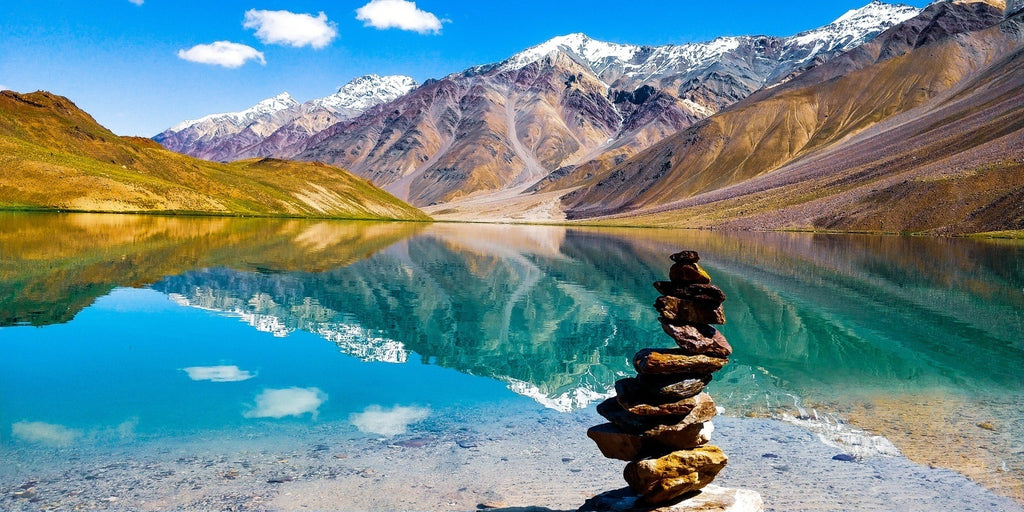
Ultimate Guide to Solo Biking Through Spiti Valley

Q: What makes Spiti Valley a must-visit for riders?
A: Oh, let me tell you, Spiti Valley is an absolute must-visit if you're into riding! Picture this: rugged terrain, remote monasteries, and breathtaking Himalayan views. It's not just about the ride; it's an immersive experience into the heart of the Himalayas and a chance to soak in the unique culture of the region.
Q: What can you expect from the terrain in Spiti Valley?
A: Get ready for a serious adventure! The terrain in Spiti Valley is pretty rugged and challenging. You'll be navigating rocky paths, steep climbs, and narrow roads that will really test your riding skills. But trust me, the landscape makes it all worthwhile. We're talking barren mountains, deep gorges, and picturesque valleys that will leave you in awe.

Q: What cultural experiences can you have in Spiti Valley?
A: This place is a cultural goldmine! You can visit ancient monasteries like Key Monastery and Tabo Monastery, where you can soak in the spiritual vibes and learn about Buddhist traditions. The local villages are super charming and you'll get to interact with the friendly Spitian people. It’s a great way to understand and appreciate their way of life.
Q: Any tips for planning a trip to Spiti Valley?
A1: Absolutely! Here are some tips to make your Spiti Valley trip unforgettable:
- Prepare for Rough Roads: The terrain can be tough, so make sure your bike is in tip-top shape. Bring essential tools and spare parts.
- Acclimatize Properly: High altitudes can be a challenge. Give yourself time to adjust to avoid altitude sickness.
- Pack Wisely: Pack warm clothes, as it can get pretty cold, especially at night. Also, carry enough food and water for the journey.
- Respect the Culture: Spiti Valley has a rich cultural heritage. Be respectful towards the local customs and traditions.
- Stay Informed: Check the weather conditions and road status before you start your journey. The weather can be unpredictable in the mountains.
Additionally, consider using the Fego Float Seat Cover to enhance comfort during long rides. It reduces the impact on your back and spine, making your journey more enjoyable.

A2: Riding through Spiti Valley is an adventure you'll never forget. The mix of challenging roads, stunning scenery, and rich cultural experiences makes it a trip worth taking. Whether you're an experienced rider or looking for a new adventure, Spiti Valley offers an experience that's both thrilling and deeply enriching.
Q: What should I inspect on my bike before starting my solo trip across India?
A1: Before you start, ensure your bike is in top condition. Check the tyres for adequate tread and no punctures. Proper tyre pressure is crucial for a smooth ride and better fuel efficiency. Test both front and rear brakes for responsiveness and replace any worn-out brake pads. Ensure all lights (headlights, tail lights, indicators) are working and carry spare bulbs. Clean and lubricate the chain to reduce friction and improve performance. Finally, check the levels of engine oil, coolant, and brake fluid, and top them up if necessary.
A2: Definitely make sure to give your bike a thorough inspection. Clean and lubricate the chain, check tyre pressure and tread, test the brakes, and ensure all lights are functioning. Don't forget to check the oil and fluids. Additionally, you might want to enhance your riding comfort with the Fego Float Seat Cover. It’s designed to reduce the impact on your back and spine, making long rides more comfortable and less tiring.
Q: What essential tools and spares should I carry during my trip?
A1: Always carry a basic toolkit and some spare parts to avoid being stranded. Include wrenches, screwdrivers, pliers, and an adjustable spanner in your toolkit. Bring spare tyre tubes, a puncture repair kit (with patches, adhesive, and a hand pump), spare bulbs, and fuses. Cable ties and duct tape can also be lifesavers for temporary fixes.
A2: A basic toolkit is essential. Make sure you have wrenches, screwdrivers, pliers, and an adjustable spanner. Spare tyre tubes and a puncture repair kit will come in handy in case of a puncture. Carry spare bulbs and fuses for night riding and low visibility conditions. Cable ties and duct tape are great for quick, temporary fixes.

Q: How can I maintain my bike during the trip to prevent issues?
A1: Regular maintenance is key. Check tyre pressure daily to ensure optimal performance and safety. Lubricate the chain every 500-700 km depending on riding conditions. Keeping your bike clean is also important as dust and dirt can accumulate, especially in monsoon or dusty areas. A clean bike not only runs better but also looks great.
A2: Make it a habit to check your tyre pressure daily and lubricate the chain every 500-700 km. Regular cleaning of your bike is essential to prevent dust and dirt from causing issues. A well-maintained bike will ensure a smoother and safer ride throughout your trip.
Q: What safety gear should I have for my solo bike trip?
A1: Safety should be your top priority. Wear a high-quality, comfortable helmet. Invest in a good riding jacket, gloves, and knee guards for protection and comfort. Always carry a first aid kit for minor injuries or emergencies.
A2: Equip yourself with essential safety gear. A good helmet is a must, along with riding gear like a jacket, gloves, and knee guards. Don’t forget to carry a first aid kit to handle any minor injuries that might occur during your trip.
Q: How can I ensure I stay on course and communicate during my solo trip?
A1: Navigation and communication are crucial. Use GPS or maps for navigation. Ensure your mobile phone is charged and carry a power bank. Install essential apps like maps, emergency contacts, and weather updates to stay informed and connected.
A2: To stay on course, use GPS or maps and make sure your phone is always charged. Carry a power bank and install essential apps for navigation, emergency contacts, and weather updates. These tools will help you stay on track and communicate effectively during your trip.

Q: What should I do about fuel management during my trip?
A1: Plan your fuel stops in advance, especially in remote areas. Carry extra fuel if necessary, but ensure it's stored safely to avoid any accidents.
A2: Make sure to plan your fuel stops carefully, particularly when traveling through remote regions. Carrying extra fuel can be a good idea, but always store it safely to prevent any hazards.
Q: How should I prepare for unpredictable weather during my trip?
A1: Be prepared for various weather conditions. Carry rain gear for both yourself and your bike to stay dry during rains. Stay hydrated and take breaks to avoid heat exhaustion in hot weather. Layer up to stay warm in colder regions.
A2: India’s weather can be unpredictable, so prepare for different conditions. Have rain gear ready for you and your bike. Stay hydrated and take breaks in hot weather to prevent heat exhaustion. In colder areas, layer up to keep warm.
Q: Any final tips for a solo bike trip in India?
A1: A solo bike trip in India can be an incredible adventure. By taking care of your bike and being well-prepared, you can ensure a safe and enjoyable journey. Happy riding!
A2: Enjoy your solo bike trip in India! With proper bike maintenance and preparation, you can have a safe and unforgettable journey. Have a great ride!
Q: Are there any accessories that can make long car trips more comfortable?

A: Definitely! Consider using the Fego Float for Cars. This seat cushion is designed to enhance comfort by reducing pressure on your back and spine, which is especially beneficial during long drives.

